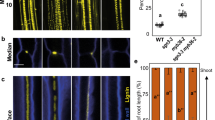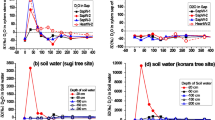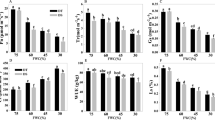Abstract
IN 1858 Th. Hartig directed attention to the fact that many trees yield drops of sap when their bark is punctured in summer and autumn. This sap issuing from the inner layers of the bast was said to include small quantities of nitrogenous substances with large quantities of various kinds of sugar. Obviously its motion and constitution might yield some information on the transport problem of organic substances. We found the most abundant flow when the puncture reaches the inner layers of the bast; deepening the puncture so as to reach the wood, causes the sap exuded to be instantly drawn in by the tensile water in the vessels. Hence the exuded sap is not driven out by root-pressure through the outer xylem. The exuding sap is transmitted by the sieve-tubes as we demonstrated by forcing a solution of potassium ferrocyanide into the puncture and afterwards tracing its path by means of ferric chloride.
This is a preview of subscription content, access via your institution
Access options
Subscribe to this journal
Receive 51 print issues and online access
$199.00 per year
only $3.90 per issue
Buy this article
- Purchase on SpringerLink
- Instant access to full article PDF
Prices may be subject to local taxes which are calculated during checkout
Similar content being viewed by others
Author information
Authors and Affiliations
Rights and permissions
About this article
Cite this article
DIXON, H., GIBBON, M. Bast-Sap in Plants. Nature 130, 661 (1932). https://doi.org/10.1038/130661a0
Issue date:
DOI: https://doi.org/10.1038/130661a0



